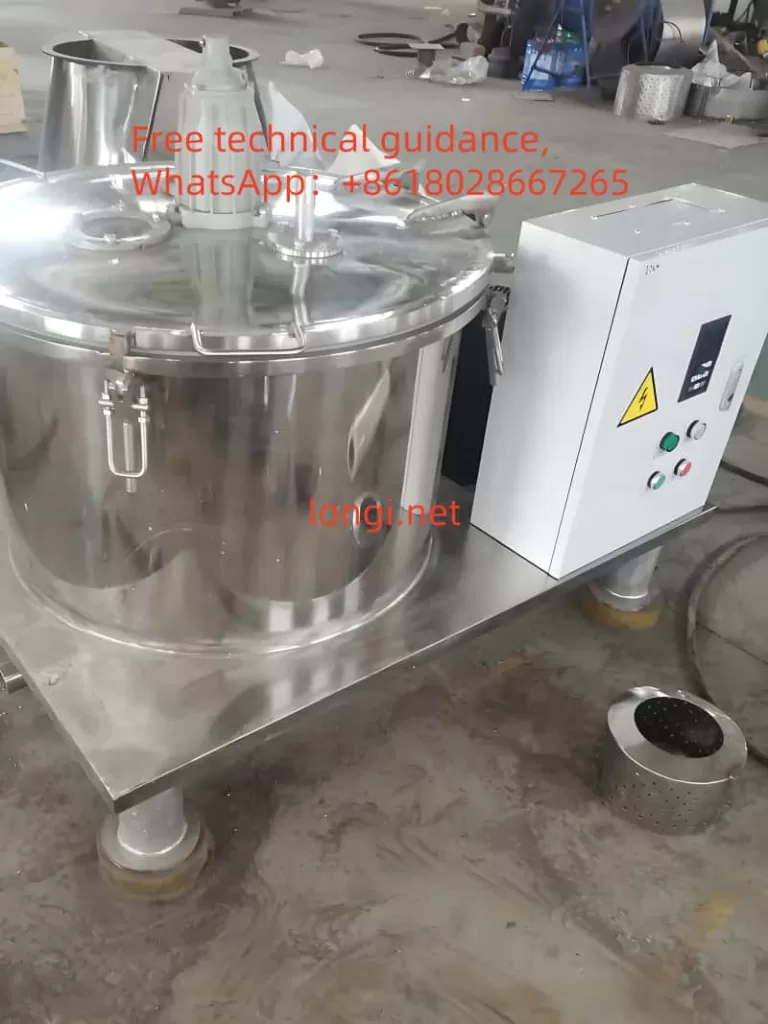
Centrifuges, as commonly used separation equipment in laboratories and industrial fields, rely heavily on stable and efficient rotational speed for optimal separation results and productivity. However, in practical applications, users may encounter issues where the centrifuge inverter operates at a sluggish pace, which not only affects separation effectiveness but also increases the risk of equipment failures. This article will analyze the reasons behind the slow speed of centrifuge inverters from multiple perspectives and provide corresponding solutions.
I. Reasons for Slow Speed of Centrifuge Inverter
- Excessive Material Load
When the amount of material being processed by the centrifuge exceeds its design capacity, the rotational speed naturally suffers, leading to sluggish acceleration. In such cases, reducing the material load is necessary to avoid overloading the centrifuge. - Accumulation of Impurities Inside the Centrifuge
The interior of a centrifuge is prone to accumulating dust and other impurities, which can increase the rotational resistance of the rotor, thereby affecting the speed. Regular cleaning of the centrifuge to maintain equipment cleanliness is crucial to addressing this issue. - Damage to Rotor Bearings
Damage to rotor bearings can not only cause a decrease in rotational speed but also lead to abnormal noises. Inspecting and replacing damaged rotor bearings can restore the centrifuge to its normal operating speed. - Loose or Worn Drive Belts
Loose or worn drive belts are common causes of slow centrifuge speed. Regular inspection of belt tension and wear, along with timely replacement of damaged components, can ensure the proper functioning of the centrifuge. - Motor Failures
Motor failures, such as winding circuit breaks, rotor fractures, or inverter malfunctions, directly impact the rotational speed of the centrifuge. In such situations, motor replacement or electrical circuit repairs are necessary. - Improper Inverter Parameter Settings
As the key device controlling the centrifuge’s rotational speed, improper settings of the inverter parameters can also lead to sluggish speed. Checking and adjusting the inverter parameters to match the actual requirements of the centrifuge is essential. - Electrical Control System Malfunctions
Issues with components in the electrical control system, such as adjustable resistors, thyristors, and rectifier diodes, can also cause unstable motor speed. Regular inspection of these components and timely replacement of damaged parts are important measures for maintaining the stability of the centrifuge’s electrical control system.

II. Solutions
- Adjust Material Load
Reasonably adjust the material load based on the centrifuge’s processing capacity to avoid overload operation. - Regularly Clean the Centrifuge
Establish a regular cleaning schedule to ensure the centrifuge is free from impurity accumulation and remains clean. - Inspect and Replace Damaged Components
Regularly inspect the condition of key components such as rotor bearings and drive belts, and promptly replace any damaged parts. - Adjust Inverter Parameters
Adjust the inverter parameters according to the actual needs of the centrifuge to ensure stable rotational speed and compliance with process requirements. - Enhance Electrical Control System Maintenance
Regularly inspect the condition of components in the electrical control system, such as adjustable resistors, thyristors, and rectifier diodes, and promptly repair or replace any damaged parts. - Professional Repair and Technical Support
For complex fault issues, seek the assistance of professional repair personnel and technical support to ensure the centrifuge receives proper maintenance and repair.
III. Conclusion
The slow speed of a centrifuge inverter can be attributed to various factors, including excessive material load, accumulation of impurities inside the centrifuge, damage to rotor bearings, loose or worn drive belts, motor failures, improper inverter parameter settings, and electrical control system malfunctions. By implementing measures such as adjusting material load, regularly cleaning the equipment, promptly replacing damaged components, adjusting inverter parameters, and enhancing electrical control system maintenance, the issue of slow centrifuge inverter speed can be effectively resolved, thereby improving the operational efficiency and stability of the equipment. Additionally, for complex fault issues, seeking professional repair and technical support is essential.
